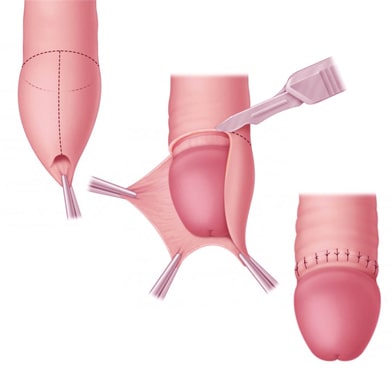Circumcision refers to the surgical removal of the foreskin. A flaccid penis has foreskins covering its head. When the penis is erect, the foreskin pulls back to make it visible. During a circumcision, a doctor removes a portion of the foreskin and reattaches the remaining skin to create a shorter skin section.
In this informative blog, we guide the readers on the basic and important instructions to follow after the circumcision surgery for a quick and smooth recovery. The insights in this blog have been taken from the expert urologist, Dr. Niren Rao, a renowned surgeon for circumcision surgery in Delhi. Keep reading to learn more.
The Circumcision Preparation Requirements
Several arrangements are made to ensure a smooth circumcision procedure:
- Pre-operative Evaluation: Surgical fitness is determined by a thorough CBC test.
- Infection Control: To treat pre-existing infections, an antibiotic prescription may be issued.
- Diabetic Management: Before surgery, diabetic patients receive sugar control measures.
- Blood Thinner Medication: Individuals taking blood thinners may need to temporarily stop taking them.
Post Circumcision Surgery Care Tips
The penis might be swollen and bruised for one to two weeks after surgery. The following are the main things that the patient must adhere to after the surgery:
- Diet
Following surgery, one can resume their regular diet. In the first 6 to 8 hours after surgery, mild nausea and possibly vomiting are possible. This usually results from anesthesia and goes away quickly. It is suggested to have a light meal and clear liquids the first evening after surgery.
- Physical Activity
For the first 72 hours after surgery, one should take a complete rest. To maintain healthy circulation, the patient is advised to take a few minutes every two hours to walk around, but other than that, they should not be involved in any other physical activity. After three days, one can get back to their regular schedule, but one should still refrain from high-impact exercises like skiing, boating, or running for a full six weeks following surgery.
- Sexual Activity
After surgery, abstain from all sexual activity for four to six weeks. In general, erections should be avoided; nevertheless, pain upon waking is common when an erection happens while one is asleep, and it cannot be controlled. Sometimes, these erections can lead to early stitch disruption, which can mean longer healing times or restrictions. They may occasionally also result in bleeding. If bleeding starts, apply pressure to the area for ten minutes. Repeat if necessary. After two rounds of pressure, contact the doctor if the bleeding does not stop.
- Wound
Most of the time, absorbable sutures used to close the incision will fall out during the first two weeks. Some will separate even sooner. It is normal to experience some redness near the sutures when they dissolve. If there is widespread redness, especially increasing pain or swelling, inform the doctor immediately. The spread of blood in the tissues may cause the penis to turn "black and blue." This can occasionally reach the lower abdomen and upper scrotum, as well as the base of the penis. All of this colouring will fade with time.
- Hygiene
The patient is permitted to shower for 48 hours after the procedure. Also, avoid tub bathing for at least 4 weeks.
- Medications
One will typically be given a prescription for a painkiller before being sent home. Contact the doctor if the painkiller does not relieve the pain.
Conclusion
Read More:

Comments
Post a Comment